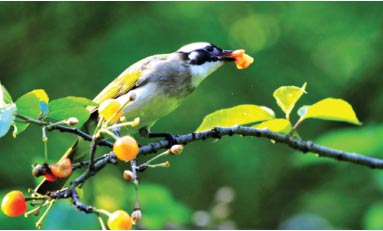Botanical garden-a colorful treat
 0 Comment(s)
0 Comment(s) Print
Print E-mail China Daily, September 5, 2016
E-mail China Daily, September 5, 2016
|
Covering an area of about 230 hectares, the Hangzhou Botanical Garden can be found at the foot of Jade Spring Hill in the northwest end of West Lake in Hangzhou. [Photo by Chai Shijue/Li Zhong/Lai Shunxing/China Daily] |
'Silent poem'
The garden is much more than picture-book landscapes. One of its most interesting missions is to showcase garden plants in the broader Chinese cultural context.
In its bonsai garden, for example, you can see how this cultivation style mirrors calligraphy, literature and paintings in plants like Pinus taiwanensis "Hayata". The pine from Taiwan has been used for Chinese bonsai-shaping since the Song Dynasty (960-1279). "Each specimen is like a silent poem," the garden's resident expert Hu Zhong says.
The Chinese phrase for bonsai is penjing, which means "scenery in a pot", he adds.
At the bonsai garden's entrance are three plants that Chinese consider "friends" in winter: A pine, bamboo and a plum tree, because they look their best and also stand out in the cold season.
There are also ginkgo specimens that defy what we've come to expect from Japanese-style bonsai. Instead of limbs that are aggressively shaped with shears to get an artful and miniaturized effect, these specimens are what director Yu calls "natural" bonsai-big trees that have been topped-usually by storms-which have spouted new shoots in appealing forms.
Other collections are native plants, and rare to endangered plants. Yu walks us over to a plant nursery where new specimens, grown from seeds and cuttings of plants in the garden's collection, are bursting with green vigor from gallon-sized plastic pots. Locally discovered species, including the winter-flowering Sinocalycanthus chinensis, have pride of place in the garden.






